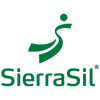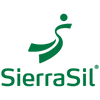Blog
It’s the start of another new year. A time to set big goals and to maybe makes some changes in your lifestyle. Many of us set New Year’s resolutions that come with big sacrifices or demand massive changes to our...
Continue reading
The holiday season is here. This means you’re busy. Really busy. Many of us thrive on being busy, but when the busyness takes over, it can be hard to keep balance in your life. For some reason, it happens every...
Continue reading
Inflammation is a key component of the body’s immune system. When the immune system detects injury, illness, or a threat, it triggers an inflammatory response. This inflammatory response works to heal wounds, fight infection, defend against bacteria and viruses, heal...
Continue reading
To have an active summer, all you need to do is to just do it. Yes, that’s right, find that sport, hobby, or activity that you enjoy and get out and do it. You don’t need to run 10 miles...
Continue reading
Delicious food. Amazing vistas. Cultural exploration. Relaxing or thrill-seeking. New experiences. Life-changing accomplishments. Bucket list goals. Eye-opening and mind-expanding. Yes, there is nothing quite like travel. The gift and beauty of travel is that it allows us to open our...
Continue reading



